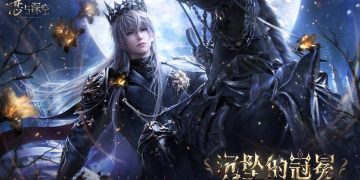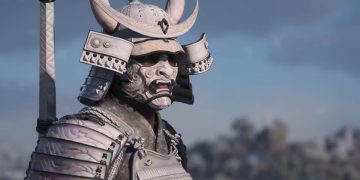As the Tekken World Tour prepares to kick off alongside the debut of Season 2, 2025 is shaping up to be a fantastic year for enthusiasts of Bandai Namco’s iconic Tekken franchise. Dating back to the original PlayStation era, Tekken holds a special place in the evolution of both gaming consoles and gameplay mechanics. It’s a perfect time to revisit the saga surrounding the Mishima family and the turbulence they’ve caused over the decades for PlayStation gamers.
The introduction of Tekken on the original PlayStation in early 1995 marked a monumental moment for fighting games. Not only did it introduce players to the infamous Mishima clan, but it also set new standards with its four-button fighting system. The PlayStation port was truly special, as it retained the arcade’s quality due to similar advanced hardware, plus added bonus content such as ending cutscenes, playable sub-boss characters, and even a secret character whose discovery was tied to mastering a side game.
With Tekken 2 hitting arcades later in 1995, the focus shifted dramatically to Heihachi Mishima, who flipped roles from villain to a more complex character. The second installment brought fresh characters like Jun and Lei and further expanded the roster, encouraging frequent plays to unlock new fighters. Landing on the PlayStation in 1996, the game introduced stunning CG movie sequences and new modes like Team Battle and Time Attack, reinforcing the series’ reputation for crafting high-quality cutscenes.
For many, Tekken 3 was their gateway into the franchise. With its arcade success followed by a PlayStation debut in 1998, it fast became a global sensation. The storyline advanced two decades, introducing Jin Kazama as the new protagonist. The game welcomed both new faces like Hwoarang and Bryan, and features like sidestep dodges that took full advantage of the 3D environment. The PlayStation version enriched this experience with extra modes such as Tekken Force, Tekken Ball, and various unlockable characters like the quirky dinosaur, Gon.
By the time PlayStation 2 arrived, Tekken Tag Tournament made its debut, showcasing impressive graphics that highlighted the PS2’s capabilities. It introduced the dynamic tag-team battles, allowing players to swap between two characters mid-fight. The expanded roster, featuring characters from earlier games, brought a mix of nostalgia and freshness, alongside the fun addition of Tekken Bowl.
Tekken 4 emerged with significant changes, including bounded stages with impactful obstacles, marking a stark departure from prior limitless arenas. It reintroduced Kazuya and ramped up the narrative aspect, introducing a comprehensive story mode and an enhanced Tekken Force. These elements complemented gameplay tweaks that reevaluated movement mechanics, appealing to both new players and devoted fans.
The anticipation built as Tekken 5 expanded on feedback by refining movement and revamping stages, adding new characters like Asuka and customizable options. While the PlayStation 2 housed the original Tekken 5, it also offered a unique mode dubbed Devil Within and classic arcade options featuring previous Tekken games. This amalgamation made it a celebrated favorite among fans.
2006’s Tekken 5: Dark Resurrection saw additions like Lili and Dragunov enhancing the character lineup. It’s PSP counterpart introduced innovative modes facilitating player interactions online. Fans yearned for a console experience, and subsequent PS Network availability allowed for online battles, cementing its status as a beloved entry.
Tekken 6 upped the ante by unveiling new characters like Bob and Zafina while escalating the Mishima family conflict. Its update, Bloodline Rebellion, added drama with fresh mechanics like Rage and Bound systems, introducing characters such as Lars and Alisa. The PSP version mirrored its console counterpart in graphics quality, even if it skipped on campaign content.
For players longing for more, 2011’s Tekken Hybrid presented an HD take on Tekken Tag Tournament and included a cinematic film. It paved the way for Tekken Tag Tournament 2, which revitalized tag-match mechanics across an expanded roster for its 2012 release.
With the dawn of Tekken Revolution, a free-to-play model focused on letting players unlock characters through in-game progressions. Through updates it expanded options and gameplay variety until its 2017 conclusion.
Fast forward to Tekken 7’s much-awaited PlayStation 4 release in 2017, two years after gracing arcades. This entry, paired with updates like Fated Retribution, brought familiar faces and worthy challengers like Street Fighter’s Akuma, along with newcomers like Josie and Shaheen. Its refined combat system paired with innovative Rage Drive and Rage Art skills redefined gameplay strategy.
The PS4 version shone with its extensive story mode and continuous DLC expansions, adding characters such as Leroy and surprise guests like Geese Howard and Noctis. Tekken 8 on the PS5, celebrated its first year with fresh character additions and a narrative cliffhanger that promises a saga yet to unfold, keeping fans eagerly anticipating the next chapter in the Mishima drama.











![[Free Games Giveaway Results] Bartender Hustle (PlayStation) Winners Announced [Free Games Giveaway Results] Bartender Hustle (PlayStation) Winners Announced](https://www.nogameover.net/wp-content/uploads/2025/07/Free-Games-Giveaway-Results-Bartender-Hustle-PlayStation-Winners-Announced-360x180.jpg)
































